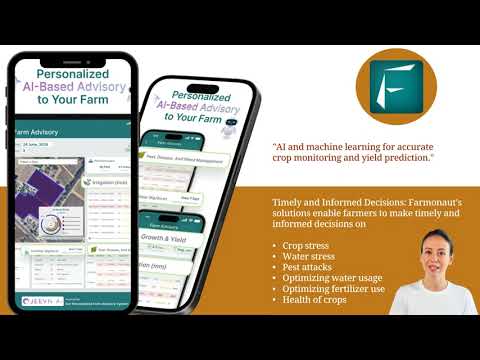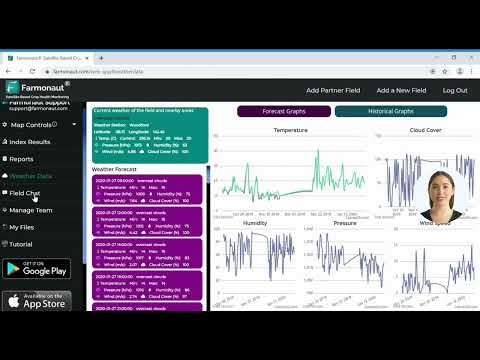Southern California Water Crisis: 7 Shocking Impacts on Farms
“Southern California farms lost over $1.2 billion in revenue due to drought-related water shortages in 2022.”
Introduction: Unfolding the Southern California Water Crisis
In the heart of the California water crisis, Southern California has emerged as a region where environmental and economic challenges intertwine with increasing urgency. The relentless Southern California drought has spurred a cascade of issues ranging from declining surface water deliveries and increased reliance on groundwater pumping to rising energy costs and widespread fallowing of arable land.
As we collectively face these growing threats, our agricultural sector—a vital pillar of the state’s economy—is caught between the intense pressure of persistent water shortages and the necessity to produce the nation’s fruits, nuts, and vegetables. Alongside, our forests are reeling, as reduced precipitation and increased temperatures impair ecosystems, exacerbate tree mortality, and amplify the risks from pests and diseases.
This comprehensive exploration of the crisis will delve into the seven most shocking impacts on Southern California farms and forestry. Drawing on key statistics, policy developments, and advanced solutions such as those from Farmonaut, we consider how sustainable water management can help chart a path toward resilience and sustainability for the region.
Roots of the Water Crisis in Southern California
Understanding the Southern California drought requires a closer look at both natural and human-induced factors:
- Prolonged Drought Conditions: Multi-year droughts have drastically reduced precipitation in the region.
- Escalating Water Demand: Both urban and agricultural demand have surged, outpacing available resources.
- Surface Water Reduction: Reservoirs and rivers have seen their levels plummet, with a 41% drop in surface water deliveries to farms in 2021 compared to the previous decade’s average (Public Policy Institute of California).
- Groundwater Overdraft: The shortfall in surface deliveries has forced farmers to ramp up groundwater pumping—by nearly 4.2 million acre-feet in 2021 alone.
- Climate Change: Intensifying droughts and unpredictable rainfall patterns have aggravated the crisis.
These compounding issues mean that our farms, forests, and entire communities are under constant threat from insufficient water—with serious ramifications for economic stability and environmental sustainability.
7 Shocking Impacts of the Water Crisis on Farms and Forestry
Let’s examine the most alarming consequences of the California water crisis on Southern California’s agriculture and forestry sectors—key drivers of the regional economy and guardians of our environment.
1. Drastic Reductions in Crop Yields
- Drought impact on agriculture has led to extensive crop losses in the Central Valley and beyond, including critical crops like almonds, pistachios, and tomatoes.
- According to the Public Policy Institute of California (PPIC), fallowing land due to water shortages could shrink farm revenue by up to $2.5 billion annually.
- Cascade effects include rising food prices and reduced supply of essential fruits and vegetables to the rest of the country.
2. Increased Reliance–and Depletion–of Groundwater
- With surface water deliveries reduced, our farmers have turned to groundwater pumping, extracting nearly 4.2 million acre-feet in 2021 alone.
- This leads to sustainability issues like falling aquifer levels, land subsidence, and higher energy costs for pumping.
- Pressures on groundwater resources threaten long-term agricultural viability if not paired with sustainable water management practices and accountability.
3. Massive Economic Losses for Farmers and Agribusinesses
- The economic impact of California drought is far-reaching—fallowing land, crop declines, and loss of livestock undermine the entire sector.
- Job losses could reach 50,000 people in the Central Valley alone.
- Export-oriented crops such as almonds and alfalfa face scrutiny for water usage versus revenue contributions (source).
4. Accelerated Degradation of Forest Health
- The forestry challenges in Southern California are intensifying: forests are left vulnerable to tree mortality, pests, and diseases due to insufficient moisture.
- This crisis undermines carbon sequestration, harms timber industry revenue, and disrupts wildlife habitats and biodiversity.
5. Shrinking Livestock Production
- Water scarcity in California agriculture is reducing available water resources for livestock, resulting in herd reductions and revenue shortfalls for ranchers.
- Feed shortages and increased prices due to crop losses further inflate operational costs.
6. Rising Energy Usage and Costs
- As farmers extract more groundwater, energy costs soar, adding to the already heavy economic burden.
- These increased costs make farm management and sustainability more challenging and decrease net fortunes for agricultural producers.
7. Widespread Fallowing and Abandonment of Farmland
- Lack of surface and groundwater forces farmers to leave huge swathes of the valley uncultivated.
- This impacts rural economies directly, leads to population outflows, and diminishes our ability to grow food in the region.
“Drought has forced a 40% reduction in irrigated farmland across Southern California since 2015.”
Comparative Impact Table: How the Crisis Affects Farms
Forestry Challenges in Southern California
Our forests play a critical role in biodiversity, carbon sequestration, and maintaining ecosystems throughout Southern California. But the persistent drought conditions have created new and serious challenges for forest management and health, including:
- Increased Mortality: Without sufficient precipitation, trees succumb to pests, diseases, and heat.
- Wildfire Risk: Drier forests with dead trees provide vast fuel reserves for increasingly severe wildfires.
- Disrupted Habitats: Loss of trees destabilizes wildlife habitats and undermines fragile ecosystems.
- Timber Industry Impact: Higher mortality and degradation threaten the supply of marketable wood, impacting timber revenue.
The current crisis requires innovative approaches to forest management—including drought-resistant replanting, advanced disease monitoring, and water conservation strategies.
Economic Impact of California Drought on Agriculture
The California water crisis is not just an environmental problem—its economic impact cuts deeply across the farming and forestry sectors and radiates into communities reliant on agriculture for their livelihoods:
- Lost Revenue: Over $1.2 billion lost in just 2022 due to drought-related water shortages.
- Export Dilemmas: Crops with high water demands but lower revenue contribution (almonds, pistachios, alfalfa) present difficult choices over continued production.
- Rising Food Prices: Reduced production contributes to inflation and supply chain pressures, affecting food security nationwide.
- Employment Declines: With up to 50,000 lost jobs projected in the Central Valley alone, rural economies may face long-term decline.
Sustainable change calls for a combination of policy, innovation, and technological interventions to protect rural prosperity and food security.
- Farmonaut’s crop loan & insurance verification helps secure financing for drought-stricken farmers with accurate satellite-based field verification.
Policy & Sustainable Water Management: Responses for Resilience
Tackling the myriad complexities of the California water crisis and Southern California drought requires decisive policy, robust management strategies, and the full engagement of stakeholders across the region.
Key Policy Responses
- The Sustainable Groundwater Management Act (SGMA): SGMA is a transformative California groundwater policy aiming for sustainable groundwater use by 2042, compelling local agencies to balance extraction with natural recharge (Earth.com).
- Urban vs. Rural Water Allocations: Policy decisions, such as the 2025 ordered release of northern freshwater supplies to urban centers, led to the unintentional flooding of San Joaquin Valley farmland—underscoring the delicate balance of water usage priorities (FT.com).
- Water-Saving Agricultural Practices: Implementation of efficient irrigation, mulching, deficit irrigation, and no-till planting are increasingly necessary.
The Role of Technology in Achieving Sustainable Water Management
Advanced monitoring and decision-support systems are essential for our collective ability to adapt and thrive:
- Accurate satellite-based field monitoring
- AI-driven irrigation advice and pest management
- Traceability tools for transparent supply chains and policy enforcement
- Fleet and resource optimization to maximize productivity per drop of water
Farmonaut is at the forefront of providing such tools, making them accessible via web, Android, and iOS applications.
Farmonaut: Driving Sustainable Water Management in Southern California Agriculture
In the context of Southern California’s water crisis, Farmonaut stands out as a pioneer, leveraging cutting-edge technology to empower farmers, businesses, and institutions toward sustainable water management and improved agricultural practices.
Satellite-Based Crop Health Monitoring
Through NDVI and multispectral imagery, Farmonaut provides real-time insights into crop health and soil moisture. With this data, we can promptly address drought impact on agriculture and optimize irrigation—crucial for groundwater management and maximizing yields, especially for almonds, pistachios, and tomatoes.
AI Advisory Systems
Farmonaut’s Jeevn AI system delivers actionable advice on irrigation, pest/disease monitoring, and climate adaptation. This accelerates responses to drought conditions, reduces losses, and supports sustainable farm management at scale.
- Farmonaut API and API developer documentation allow seamless integration of satellite data and weather analytics—ideal for agtech innovators and large agribusinesses.
- Blockchain-based product traceability strengthens supply chain transparency, helping food companies and cooperatives maintain consumer trust.
- Carbon footprinting tools guide farming enterprises to monitor and reduce environmental impact—crucial as part of holistic sustainable water management and aligning with regulatory requirements.
- Fleet management solutions equip large-scale farmers and agribusinesses to optimize machinery usage, cut operational costs and decrease water wastage.
- For government agencies and NGOs, large-scale farm management tools support crop area/yield estimation, policy rollouts, and subsidy distribution programs.
Access Farmonaut via web app, Android, or iOS. Scalable, cost-effective, and built to serve California’s farmers—from individual family farms to vast agricultural businesses.
- If you’re involved in crop plantation, forest advisory, or resource management, get started with Farmonaut for instant satellite insights.
Farmonaut Subscriptions
FAQ: Southern California Water Crisis & Agriculture
Q1: What is the primary cause of Southern California’s water crisis?
The crisis is driven by a combination of prolonged droughts, rising demand, reduced surface water deliveries, and unsustainable groundwater extraction. Climate change intensifies these trends, creating a perfect storm of water scarcity in the region.
Q2: How does drought impact crop yields and farm revenue?
Severe drought leads to irrigation cutbacks, forcing farmers to fallow land or reduce plantings. This translates into lower yields, rising input costs, and a measurable decline in annual farm revenue—up to $2.5 billion according to leading research.
Q3: What crops are most affected in Southern California?
High-value, water-intensive crops—such as almonds, pistachios, tomatoes, and certain vegetables—are hit particularly hard by water shortages, due to their sensitivity to reduced irrigation.
Q4: How does the water crisis influence forestry?
Forestry challenges include increased tree mortality, pest and disease outbreaks, and greater wildfire risk. This weakens biodiversity, affects timber industry revenue, and puts wildlife habitats at risk.
Q5: What solutions exist for achieving sustainable water management?
Solutions include implementing policies like SGMA, adopting water-saving crop management techniques, using real-time satellite monitoring, and optimizing irrigation through AI-powered advisory tools. Farmonaut provides several of these key technologies.
Q6: How can farmers get started with digital farm monitoring?
Farmers can access real-time satellite-driven monitoring and AI advisory by signing up at Farmonaut’s web or mobile app. The platform offers affordable, easy-to-use tools for farms and agribusinesses alike.
Conclusion: A Path Forward for Southern California’s Agricultural Future
The Southern California water crisis is a defining challenge of our time, threatening the economic and ecological pillars of the region’s identity. Agriculture and forestry face unprecedented pressures—from declining yields to compromised forest health and shrinking rural economies.
But the way forward is not without hope. Through a united commitment to sustainable water management—powered by smart policy reforms, innovative technologies, and the resilience of our farming communities—we can ensure a sustainable future for California’s agricultural landscape.
Farmonaut remains dedicated to amplifying this transformation, equipping stakeholders across the agricultural sector to monitor, adapt, and thrive, even in the toughest drought conditions.
Together, by embracing data-driven, resource-smart practices, we can protect our land, revitalize our economy, and safeguard food security and sustainability for the generations to come in Southern California—and beyond.






















